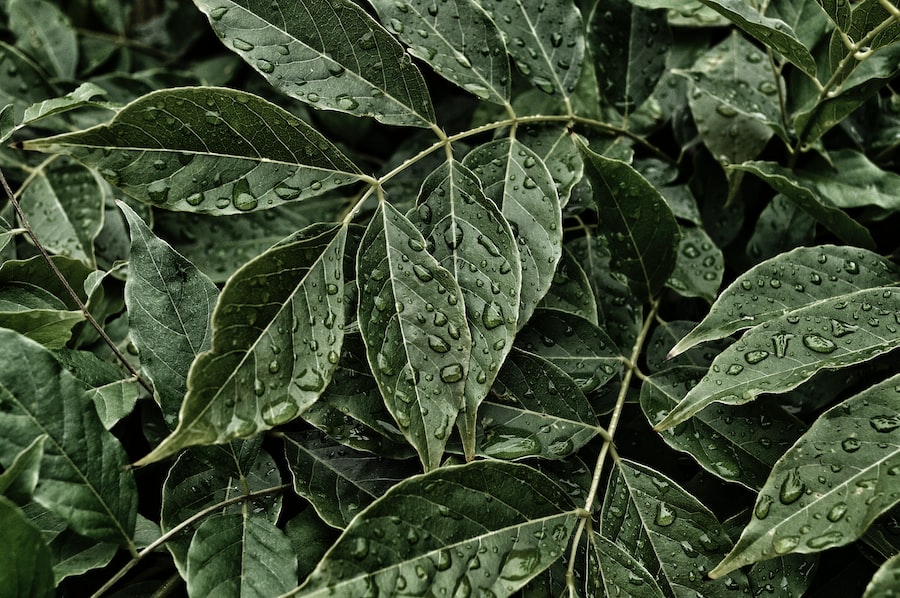Bringing the Beauty of Calla Lilies to Your Outdoor Garden: Can You Plant Them Outside?

Calla lilies are a popular choice for gardeners due to their elegant and striking appearance. With their trumpet-shaped flowers and long, slender stems, calla lilies add a touch of sophistication to any garden. They come in a variety of colors, including white, yellow, pink, and purple, making them a versatile choice for any garden design. In this blog post, we will explore the different types and characteristics of calla lilies, discuss whether they can be planted outdoors, provide tips for choosing the right location and preparing the soil, and offer a step-by-step guide for planting and caring for calla lilies in an outdoor garden.
Key Takeaways
- Calla lilies are beautiful flowers that come in a variety of colors and types.
- Calla lilies can be planted outdoors and thrive in the right conditions.
- Choosing the right location and preparing the soil are important for optimal growth and blooming.
- Planting calla lilies requires a step-by-step process, but it is relatively easy.
- Proper watering, fertilizing, and pest control are essential for healthy calla lilies.
Understanding Calla Lilies: Types, Colors, and Characteristics
Calla lilies belong to the Zantedeschia genus and are native to southern Africa. There are several different types of calla lilies, including the classic white calla lily (Zantedeschia aethiopica), which is the most common variety found in gardens. Other popular types include the pink calla lily (Zantedeschia rehmannii) and the yellow calla lily (Zantedeschia elliottiana). Each type has its own unique characteristics and growth habits.
Calla lilies come in a wide range of colors, from the traditional white to vibrant shades of yellow, pink, and purple. The color of the flowers is determined by the pigments present in the plant’s cells. White calla lilies have no pigments in their cells, while other colors are produced by pigments such as anthocyanins and carotenoids.
In terms of size and shape, calla lilies typically have large, arrow-shaped leaves that grow from a central rhizome. The flowers are usually trumpet-shaped with a long spadix in the center. The size of the flowers can vary depending on the variety, with some reaching up to 6 inches in length.
Can Calla Lilies Be Planted Outdoors? Exploring the Possibilities
Calla lilies can be planted outdoors in certain climates and conditions. They are native to wetlands and marshes, so they thrive in moist soil and humid environments. If you live in a region with mild winters and warm summers, you can plant calla lilies directly in your garden.
One of the benefits of planting calla lilies outdoors is that they can grow much larger and produce more flowers than when grown in pots or containers. They also have a longer blooming period, typically from late spring to early fall, providing a continuous display of color in your garden.
However, there are some challenges to planting calla lilies outdoors. They are not frost-tolerant, so if you live in a region with cold winters, you will need to dig up the bulbs and store them indoors during the winter months. Calla lilies also require a lot of water, so if you live in an area with dry or arid conditions, you will need to provide regular irrigation to keep them hydrated.
Choosing the Right Location for Your Calla Lily Garden
| Location Factor | Importance | Considerations |
|---|---|---|
| Climate | High | Temperature, humidity, rainfall |
| Soil | High | pH level, drainage, nutrients |
| Sunlight | High | Amount, duration, intensity |
| Wind | Medium | Strength, direction, frequency |
| Proximity to water source | Medium | Availability, quality, distance |
| Accessibility | Low | Distance from home, transportation, parking |
Choosing the right location for your calla lily garden is crucial for their growth and blooming. Calla lilies thrive in full sun or partial shade, so it’s important to select a spot that receives at least 6 hours of direct sunlight per day. However, they can also tolerate some shade, especially in hot climates where too much sun can cause the flowers to fade or wilt.
In terms of soil quality, calla lilies prefer moist, well-draining soil that is rich in organic matter. They do not tolerate waterlogged soil or standing water, as this can cause the bulbs to rot. If your soil is heavy or clay-like, you can improve its drainage by adding organic matter such as compost or well-rotted manure.
When choosing the location for your calla lily garden, consider the proximity to a water source. Calla lilies require regular watering, especially during hot and dry periods, so it’s important to have easy access to water. If you don’t have a nearby water source, you may need to install a drip irrigation system or use a hose with a sprinkler attachment to ensure that your calla lilies receive adequate moisture.
Preparing the Soil: Tips for Optimal Growth and Blooming
Preparing the soil is an important step in ensuring the optimal growth and blooming of your calla lilies. Start by removing any weeds or grass from the planting area, as they can compete with the calla lilies for nutrients and water. You can do this by hand or use a garden hoe or trowel to loosen the soil and remove the weeds.
Next, amend the soil with organic matter such as compost or well-rotted manure. This will help improve the soil structure and fertility, as well as provide essential nutrients for the calla lilies. Spread a layer of organic matter over the planting area and use a garden fork or tiller to incorporate it into the soil.
Once you have amended the soil, rake it smooth and level. This will create a nice, even surface for planting your calla lilies. Avoid compacting the soil by walking on it or using heavy machinery, as this can restrict root growth and drainage.
Planting Calla Lilies: Step-by-Step Guide for Outdoor Gardens

Planting calla lilies in an outdoor garden is relatively easy and straightforward. Here is a step-by-step guide to help you get started:
1. Dig a hole that is twice as wide and deep as the bulb.
2. Place the bulb in the hole with the pointed end facing up.
3. Backfill the hole with soil, firming it gently around the bulb.
4. Water the newly planted bulb thoroughly to settle the soil and remove any air pockets.
5. Mulch the planting area with a layer of organic mulch, such as straw or wood chips, to help conserve moisture and suppress weeds.
6. Water the calla lilies regularly, especially during dry periods, to keep the soil evenly moist.
7. Fertilize the calla lilies every 4-6 weeks during the growing season with a balanced fertilizer, following the manufacturer’s instructions.
8. Remove any faded or wilted flowers to encourage continuous blooming.
Watering and Fertilizing Calla Lilies: Essential Care Tips
Watering and fertilizing are essential for the health and vitality of calla lilies. They require regular watering, especially during hot and dry periods, to keep the soil evenly moist. However, they do not tolerate waterlogged soil or standing water, as this can cause the bulbs to rot.
To water calla lilies in an outdoor garden, use a hose with a sprinkler attachment or install a drip irrigation system. Water deeply and thoroughly, making sure that the soil is moist to a depth of at least 6 inches. Avoid overhead watering, as this can lead to fungal diseases and damage the flowers.
In terms of fertilizing, calla lilies benefit from regular applications of a balanced fertilizer. Use a slow-release granular fertilizer or a liquid fertilizer diluted to half strength. Apply the fertilizer every 4-6 weeks during the growing season, following the manufacturer’s instructions. Be careful not to over-fertilize, as this can lead to excessive foliage growth at the expense of flower production.
Dealing with Common Calla Lily Pests and Diseases
Like any plant, calla lilies are susceptible to pests and diseases. Some common pests that can affect calla lilies include aphids, slugs, and snails. Aphids are small, soft-bodied insects that feed on the sap of the plant, causing stunted growth and distorted leaves. Slugs and snails are nocturnal pests that feed on the leaves and flowers, leaving behind slimy trails.
To control aphids, you can spray the plants with a strong jet of water to dislodge them or use an insecticidal soap or neem oil spray. For slugs and snails, you can handpick them from the plants or use organic slug pellets or beer traps to lure and kill them.
In terms of diseases, calla lilies can be affected by fungal diseases such as root rot and leaf spot. Root rot is caused by overwatering or poorly drained soil, while leaf spot is caused by wet foliage and high humidity. To prevent these diseases, make sure to provide adequate drainage and avoid overhead watering. If your calla lilies do develop a fungal disease, you can treat them with a fungicide according to the manufacturer’s instructions.
Harvesting and Storing Calla Lily Bulbs for Winter
In regions with cold winters, calla lily bulbs need to be dug up and stored indoors during the winter months. The ideal time to harvest calla lily bulbs is after the foliage has died back naturally in the fall. This usually occurs after the first frost or when the leaves turn yellow and start to wither.
To harvest the bulbs, carefully dig around the base of the plant with a garden fork or shovel. Lift the bulbs out of the ground, taking care not to damage them. Shake off any excess soil and cut off any remaining foliage.
Once you have harvested the bulbs, allow them to dry in a cool, dry place for a few days. Then, store them in a cool, dark location, such as a basement or garage, where the temperature remains between 45-55°F (7-13°C). Place the bulbs in a paper bag or cardboard box filled with dry peat moss or vermiculite to prevent them from drying out.
Check the bulbs periodically during the winter months to make sure they are not rotting or drying out. If you notice any signs of decay or shriveling, discard the affected bulbs to prevent the spread of disease.
Enjoying the Beauty of Calla Lilies in Your Outdoor Garden
In conclusion, calla lilies are a beautiful and elegant addition to any outdoor garden. With their striking flowers and long-lasting blooms, they can create a focal point or add a touch of color to your garden design. By choosing the right location, preparing the soil, and providing proper care and maintenance, you can enjoy the beauty of calla lilies in your outdoor garden for years to come.
Remember to choose a location that receives adequate sunlight and has well-draining soil. Prepare the soil by adding organic matter and ensure that it is moist but not waterlogged. Plant the calla lily bulbs at the right time and water and fertilize them regularly to promote healthy growth and blooming.
By following these tips and guidelines, you can create a stunning calla lily garden that will be the envy of your neighbors. So go ahead and plant some calla lilies in your outdoor garden and enjoy their beauty all season long!



